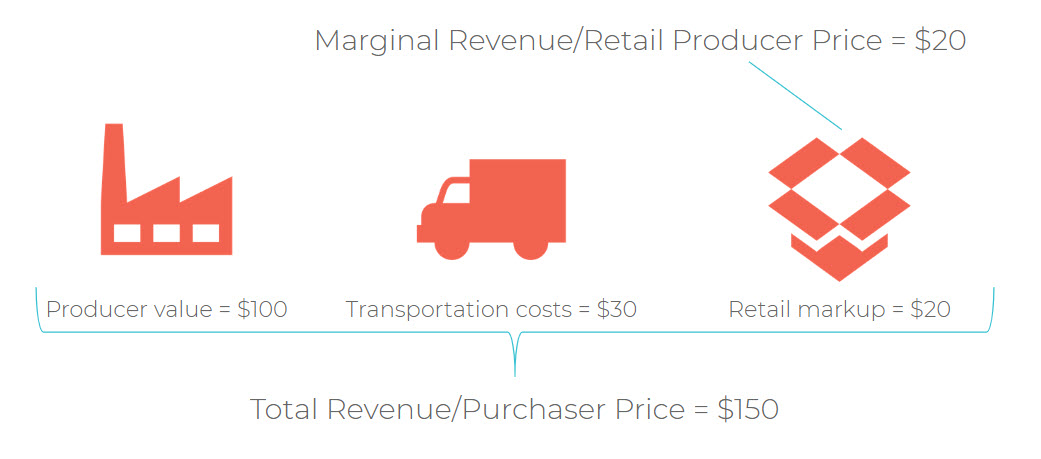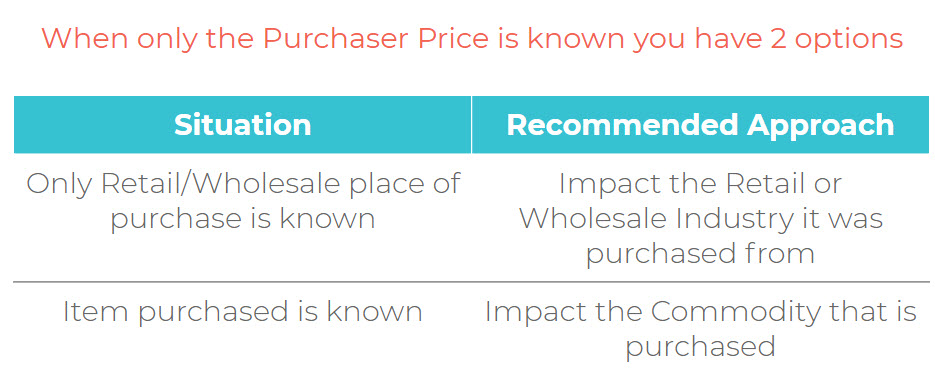Choosing Your Data
IMPLAN offers a wide variety of data options to meet every user’s local study area needs. Below is a description of the type of data files we offer, so you can easily select which is best to custom design your study. We also include a quick reference table so you can easily visualize whats available in each package.
|
Data Purchase |
Zip code Information |
County Information |
Congressional Districts |
State Totals |
National Totals |
|
County Totals |
No |
Yes |
No |
No |
No |
|
County Plus |
Yes |
Yes |
Yes |
No |
No |
|
Individual Congressional Districts |
No |
No |
Yes |
No |
No |
|
State Totals |
No |
No |
No |
Yes |
No |
|
State Package |
No |
Yes |
No |
Yes |
Yes |
|
State Package Plus |
Yes |
Yes |
Yes |
Yes |
Yes |
|
51 State Totals |
No |
No |
No |
Yes |
Yes |
|
National Totals |
No |
No |
No |
No |
Yes |
|
National Congressional Disctricts |
No |
No |
Yes |
Yes |
Yes |
|
National Package |
No |
Yes |
No |
Yes |
Yes |
|
National Package Plus |
Yes |
Yes |
Yes |
Yes |
Yes |
COUNTY LEVEL
County Totals
The County Totals Data File provides IMPLAN information for analysis at the level of an individual county. Multiple county level files can be combined into a single analysis or compared in multi-regional analysis. County Totals are perfect for users purchasing 1-4 county regions in the same state or multiple counties scattered through states, but who do not need to view impacts at metropolitan or zip code levels.
County Plus
The County Plus Data File provides IMPLAN information for analysis at the level of an individual county with the ability to break the county down into specific zip code regions. County Plus files also include the Totals information so that county information can be accessed and compared to other county regions without having to aggregate all the zip code information. County Plus packages provide you with the power to custom aggregate zip codes to create metropolitan areas within the selected county. As with Totals files, these are a great choice for users examining 1-4 county regions in the same state or multiple counties scattered through states.
STATE LEVEL
State Totals
The State Totals Data File provides IMPLAN information for analysis at an aggregated state level. Multiple State Totals files can be combined into a single analysis or can be compared in multi-regional analysis. State Totals are for users who do not need to view impacts at county, metropolitan, or zip code levels but are interested in seeing only how impacts affect a state or a group of states as a whole.
State Packages
State Packages provide IMPLAN information for analysis for every county within the selected state. These packages should be considered by those wishing to model information for multiple County Totals within a state, especially those looking to purchase 4 or more County Totals files. State Packages provide the ability to break the state down into individual counties or groups of counties, as well as, provide State Totals for the selected state and National Totals information.
State Package Plus
State Package Plus files provide IMPLAN information for analysis for every county within the selected state and the ability to break each county into its zip code regions. These packages should be considered by those wishing to model information for multiple County Plus files within a state, especially those looking to purchase 4 or more County Plus files. State Package Plus files provide the ability to break the state down into individual counties, groups of counties, zip codes or groups of zip codes for complete customization of the study area. State Totals for the selected state and National Totals are also provided.
51 State Totals
The 51 State Totals Data provides IMPLAN information for analysis of all 51 states at an aggregated state level. With this package users can receive all the aggregated state level information for the entire nation in a single purchase. State Totals data provides 51 files that can be studied independently or combined to perform impact analyses. 51 State Totals do not have information for modeling at the county, metropolitan, or zip code level. This information is designed for those needing to perform models on 5 or more individual states or state groupings. National Totals are also provided.
NATIONAL LEVEL
National Totals
The National Totals provide IMPLAN information for analysis at the aggregated national level. National Totals are for users who do not need to view impacts at state, county, metropolitan, or zip code levels, but are interested in seeing only how impacts affect the nation as a whole.
National Package
The National Package is designed to provide IMPLAN information for analysis for every county in all 51 states in the nation. This package includes all the County Totals and all State Totals that IMPLAN produces, organized by state. The National Package provides the ability to break the state down into individual counties or groups of counties, as well as, individual states or groupings of states, or, in IMPLAN Pro, to create multi-regional analyses for any region in the nation for those doing large numbers of studies on geographically diverse regions. National Totals are also included.
National Package Plus
Designed to provide all the U.S. data information IMPLAN has to offer, the National Package Plus includes the County Plus, State Totals, and National Totals data so that users can create studies on any area in the nation from the zip code level up. This package is for users who do large amounts of impact analysis on geographically diverse regions and who need to view impacts at every local level.





